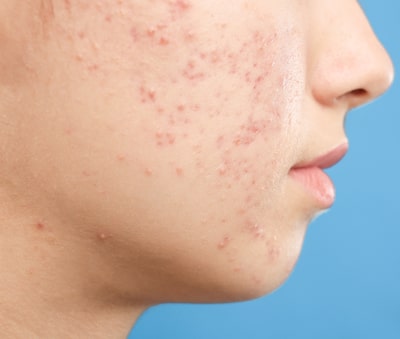Facial scar treatment is performed to minimize or improve the appearance of scars on the face with both surgical and nonsurgical methods. There are various facial scar treatments, and the best method depends on the type of scarring and the ability of their body to heal itself.
Scars can be raised, indented or flat in appearance and some nonsurgical options for facial scar treatments include corticosteroid injections, lasers, microdermabrasion and chemical peels. Surgical facial scar treatment, which is also known as scar revision, involves the removal or cutting out of the scar so it can heal in a more aesthetically pleasing manner.
Facial Scar Treatment – Ideal Candidates
An ideal candidate for a facial scar treatment includes patients bothered by their facial scarring such as acne scarring or flat, raised, and red scars. It does not include patients with an active acne breakout or someone with certain skin conditions or skin diseases in the treatment area.
Facial Scar Treatment – How it is Performed
Facial scar treatment procedures are usually performed in an office and the procedure time and technique depends on the type of treatment.
Raised and/or red scars are typically treated with cortisone injections, but compression bandages can also be applied to help reduce the redness as well as flatten the scar. Microdermabrasion, laser treatments or chemical peels can treat indented scars and some flat scars. During these treatments, the facial area is numbed with a topical cream or a fan blowing cool air may be used to ease discomfort. A special sanding tip, chemical or laser is applied or passed over the skin to remove the top layers of skin and reveal new, fresher-looking skin.
Scar revision is a surgical procedure that involves cutting out the scar and then the doctor closes the new wound with stitches. A hollow, bladed instrument is used to punch out the scar from the skin. While these surgical procedures will still cause a scar, the new scar will be more cosmetically appealing in appearance.

Facial Scar Treatment Recovery and Results
The recovery period after a facial scar treatment differs according to the procedure that is performed and the ability of the patient to heal. The patient might need a week of rest after the treatment depending on how big the scar is and how aggressively it is treated.
Patients might see some redness, bruising, peeling, or swelling after facial scar treatments. This will be followed by a pinkness that can last anywhere from several weeks to several months. Patients who have a surgical procedure may have some bleeding and will need stitches on the wound. Patients should avoid the UV rays of the sun as the skin will be sensitive to sunburns.
It can take some time for noticeable improvements to appear since many of the treatments rely on new skin growth as well as collagen stimulation. In addition, some of the treatments only require one treatment while others require multiple treatments. Patients that require multiple sessions that take place over a period of several weeks, or even multiple months, may have various recovery periods and will need to wait a longer time before the results can be appreciated due to additional swelling and/or peeling.
Approximately three months after most nonsurgical facial scar treatments, the patient can begin to easily visualize the results. Surgical facial scar treatment methods can produce an aesthetically pleasing scar which will replace the original scar. However, it can take a full year for this scar to effectively fade from red to a pale color. In order to maintain their results, patients will need to use sunblock when they are outside in order to protect the new skin and/or scars.
Facial Scar Treatments – Risks and Limitations
One of the main limitations of facial scar treatments is the fact that most scars cannot be completely removed. However, their appearance can be improved by a surgeon. Patients with darker skin tones might experience permanent skin discoloration after some facial scar treatments. Facial scars that are the result of an injury or surgical procedure are limited from most facial scar treatments until the scar has fully healed. The surgeon has to wait in this case because performing certain treatments too soon can actually cause the scar to become worse in appearance.
Some of the risks of facial scar treatments include:
- Redness
- Skin irritation (much like a sunburn)
- Bleeding
- Swelling
- Infection
- Poor wound healing
- Damage to the underlying structures
- Scarring
Many of the side effects that result from facial scar treatments are minimal and the risks are usually rare. Having said that, it is important for patients to understand all possible risks before agreeing to any cosmetic procedure. In order to minimize the risks and promote better results, patients need to use the services of a board-certified surgeon who is experienced in treating a facial scar. A board-certified doctor can accurately assess the type of scar and determine the most appropriate scar treatment option. Patients should also follow all post-treatment instructions in order to gain the best results.
